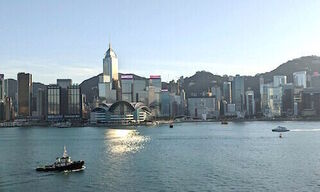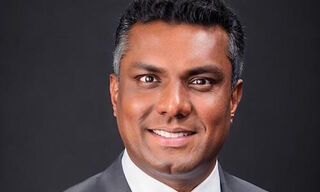Air transport growth has resulted in higher capacity utilisation in sectors such as tourism. There are, in fact, discussions about limiting or redirecting visitor flows, Eric Heymann writes on finews.first.
finews.first is a forum for renowned authors specialized on economic and financial topics. The publishers of finews.com are responsible for the selection.
Only a few decades ago, flying was regarded as pure luxury. By now, however, air travel has become affordable for the middle class, which is growing around the world. Fierce competition between the airlines, more efficient aircraft, a larger number of flight connections, the expansion of airport infrastructure and better transparency of fare prices thanks to online portals have contributed to this development. At the same time, business travel has been growing quite steadily on a global scale.
In recent years, air transport has grown at above-average rates in the Middle East (by 10 percent per year between 2011 and 2018) and in the Asia-Pacific region (8.5 percent p.a.). For the Middle East, this development can be explained by the quick expansion of Gulf airlines and airports. And in Asia-Pacific, air travel is propped up by the wide-spread uptrend in local incomes and pent-up demand for air travel.
«Less competition tends to reduce the number of connections and downward pressure on fares»
In North America, air transport has been growing at a much lower rate since 2011, at just above 3 percent p.a. The U.S. in particular are a relatively mature market, as flying has been a common means of transport for decades. In addition, consolidation between airlines has already made considerable progress in North America. And less fierce competition tends to reduce the number of flight connections and downward pressure on fares. In fact, airlines have made considerably higher profits in North America than in other regions during the last few years.
In Europe, air transport growth has been only slightly below the global average since 2011, which is remarkable, seeing that the market is already quite mature.
While airlines are likely to pass on part of their higher expenses to their clients via higher fares, general price hikes based «only» on higher demand and limited capacities should remain an exception and occur only on connections where competition is scarce. Overall, competition between the airlines suggests that none of them is likely to reap excess returns in the long run.
«To some extent, overtourism is caused by the fact that flying has become affordable or even cheap»
Air transport growth has resulted in higher capacity utilisation in related sectors, such as tourism. At some particularly popular destinations, including several metropolises in Europe, the limits of (socially accepted) growth appear to have been reached. This phenomenon is often called «overtourism». These destinations are currently discussing ways to redirect or reduce visitor flows because more and more local residents are no longer willing to put up with the negative effects of tourism.
To some extent, the overtourism phenomenon is caused by the fact that flying has become affordable or even cheap. At the beginning of 2018, low-cost carriers had a share of roughly 30 percent in overall air travel in Europe, up from 24 percent at the beginning of 2011. Of course, other factors contribute to overtourism, too, for example online portals which have specialised in providing private accommodation.
«The expansion of the aviation and tourism sectors runs counter to climate protection goals»
As a result, the supply of relatively cheap accommodation has ballooned in many cities – and intensified bottlenecks on the local housing markets. In addition, more and more people go cruising. However, residents of popular coast towns have become skeptical about cruise tourists, who tend to come on shore in droves, but do not spend much locally.
Still, any efforts to limit or even scale back tourism are a tightrope walk for the economies of these cities and regions. The World Travel & Tourism Council recently found that holiday or business travel often makes up a high single-digit or even two-digit percentage of a city’s local GDP. In addition, numerous people work in tourism-related sectors. It will not be easy to find a compromise between the contrary interests of the local tourism industry and the people suffering from overtourism.
«Policymakers are not willing to tell their voters that this is necessary»
The expected expansion of the aviation and tourism sectors runs counter to international climate protection goals, at least as long as it is based on the currently available technologies. If policymakers were really serious about their official climate goals, they would have to take much stricter measures to limit air transport growth. So far, however, they are not willing to tell their voters that this is necessary. And remember that carbon emissions from international aviation are not allocated to the emissions budgets of individual countries.
Ultimately, it would probably not go down well with voters if air travel became so expensive that only prosperous people could afford it. Outside Europe, not many regulatory measures have been taken to reduce the negative environmental impact of air transport.
- You can find an extended version of this article with additional graphics here.
Eric Heymann is an analyst at Deutsche Bank in Frankfurt. He is specialized in topics such as automobile, industries, climate policy, and transport sector.
Previous contributions: Rudi Bogni, Peter Kurer, Oliver Berger, Rolf Banz, Dieter Ruloff, Werner Vogt, Walter Wittmann, Alfred Mettler, Peter Hody, Robert Holzach, Craig Murray, David Zollinger, Arthur Bolliger, Beat Kappeler, Chris Rowe, Stefan Gerlach, Marc Lussy, Nuno Fernandes, Richard Egger, Maurice Pedergnana, Marco Bargel, Steve Hanke, Andreas Britt, Urs Schoettli, Ursula Finsterwald, Stefan Kreuzkamp, Oliver Bussmann, Michael Benz, Peter Hody, Albert Steck, Andreas Britt, Martin Dahinden, Thomas Fedier, Alfred Mettler, Brigitte Strebel, Peter Hody, Mirjam Staub-Bisang, Nicolas Roth, Thorsten Polleit, Kim Iskyan, Stephen Dover, Denise Kenyon-Rouvinez, Christian Dreyer, Kinan Khadam-Al-Jame, Robert Hemmi, Anton Affentranger, Yves Mirabaud, Katharina Bart, Frédéric Papp, Hans-Martin Kraus, Gerard Guerdat, Didier Saint-Georges, Mario Bassi, Stephen Thariyan, Dan Steinbock, Rino Borini, Bert Flossbach, Michael Hasenstab, Guido Schilling, Werner E. Rutsch, Dorte Bech Vizard, Adriano B. Lucatelli, Katharina Bart, Maya Bhandari, Jean Tirole, Hans Jakob Roth, Marco Martinelli, Beat Wittmann, Thomas Sutter, Tom King, Werner Peyer, Thomas Kupfer, Peter Kurer, Arturo Bris, Frederic Papp, Claudia Kraaz, James Syme, Peter Hody, Dennis Larsen, Bernd Kramer, Ralph Ebert, Marionna Wegenstein, Armin Jans, Nicolas Roth, Hans Ulrich Jost, Patrick Hunger, Fabrizio Quirighetti, Claire Shaw, Peter Fanconi, Alex Wolf, Dan Steinbock, Patrick Scheurle, Sandro Occhilupo, Claudia Kraaz, Will Ballard, Michael Bornhäusser, Nicholas Yeo, Claude-Alain Margelisch, Jean-François Hirschel, Jens Pongratz, Samuel Gerber, Philipp Weckherlin, Anne Richards, Michael Welti, Antoni Trenchev, Benoit Barbereau, Pascal R. Bersier, Shaul Lifshitz, Klaus Breiner, Ana Botín, Michel Longhini, Martin Gilbert, Jesper Koll, Ingo Rauser, Carlo Capaul, Claude Baumann, Markus Winkler, Konrad Hummler, Thomas Steinemann, Karin M. Klossek, Michael Welti, Christina Boeck, Michel Longhini, Guillaume Compeyron, Miro Zivkovic and Alexander F. Wagner.



















